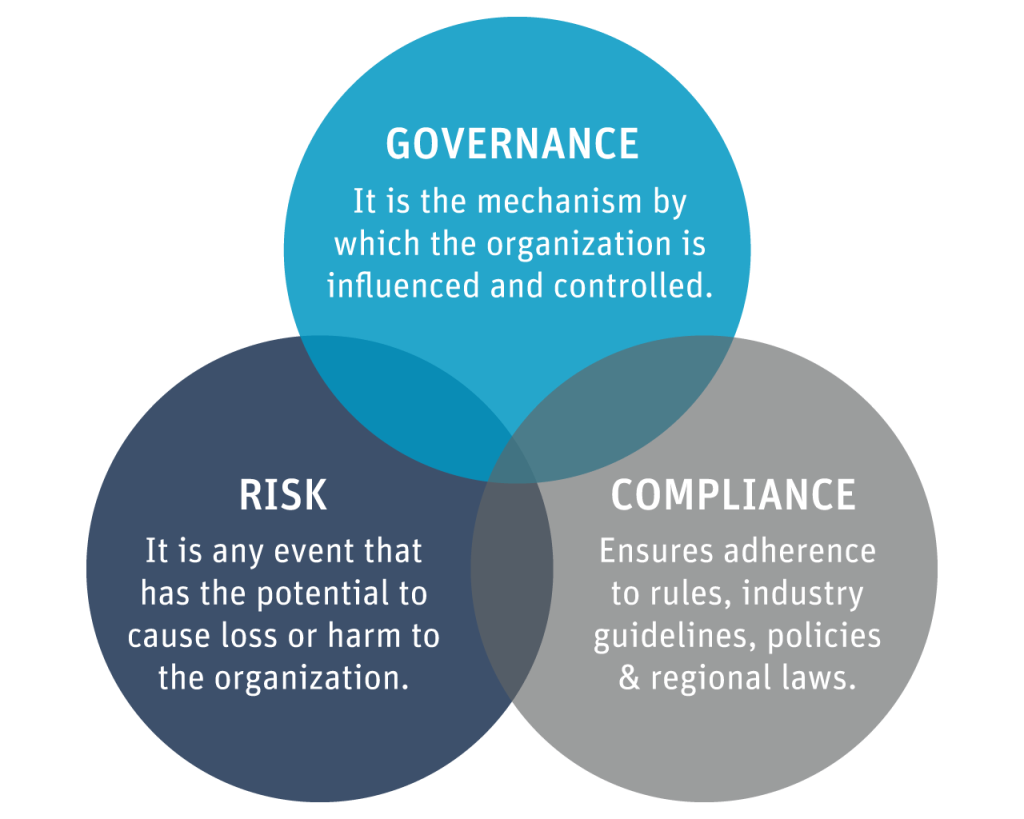
- GRC integrates governance, risk management, and compliance to ensure ethical, transparent, and efficient business operations.
- Effective GRC implementation can enhance efficiency, improve decision-making, and strengthen stakeholder trust.
- Aligning GRC with ESG goals involves integrating sustainability metrics into risk assessments and compliance efforts.
Governance, Risk, and Compliance (GRC) is an essential operational strategy organizations use to manage governance, enterprise risk, and regulatory compliance efforts. Developed by the Open Compliance and Ethics Group (OCEG) in 2002, GRC aims to achieve “Principled Performance” by aligning a company’s activities with its business goals. It encompasses three core principles: governance, which involves ethical management and resource allocation; risk management, which focuses on identifying and mitigating potential threats; and compliance, which ensures adherence to laws and regulations.
The GRC Capability Model, also developed by OCEG, provides a structured approach to implementing GRC through four components: Learn, Align, Perform, and Review. This model promotes integrating GRC practices into a unified approach, ensuring organizations achieve principled performance. Implementing a GRC framework involves establishing policies and controls that promote adherence to best practices, risk mitigation, and informed decision-making.
Effective GRC implementation offers numerous benefits, such as enhanced efficiency through streamlined operations, more substantial reputation and stakeholder trust due to ethical practices, and improved decision-making with centralized risk and compliance data. Companies can leverage GRC to align their strategies with Environmental, Social, and Governance (ESG) goals by assessing current processes, integrating ESG criteria into risk assessments, and tailoring compliance efforts to meet ESG standards.
Tools like Convene ESG can help organizations integrate their GRC programs with ESG initiatives, providing features for centralized data management, automated workflows, and enhanced reporting. This integration supports sustainability goals while maintaining compliance, ensuring organizations can navigate complex regulations and mitigate risks effectively.


Leave a Reply
You must be logged in to post a comment.